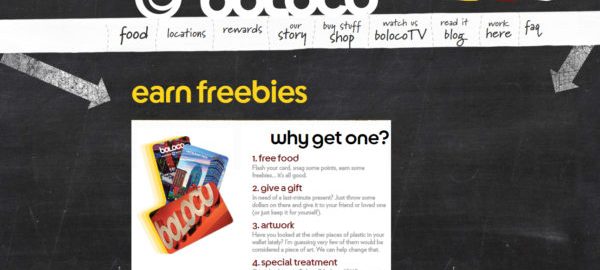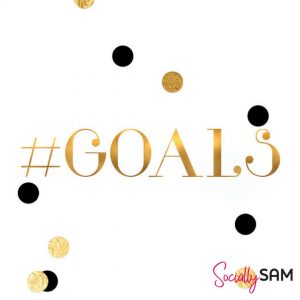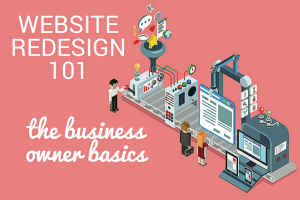The fastest way to someone’s heart is through their stomach, right?
I don’t know about you, but the only thing I do more consistently than sleep is eat.
When we consider my three square meals a day plus snacks, it’s no surprise that brands in the food industry are going gourmet with next-level customer loyalty programs.
Loyalty marketing is the natural complement to the rising consumer demand for personalized brand experiences. These days, consumers want to be recognized as unique in their tastes and preference, rewarding businesses that provide such experiences.
“As a customer’s relationship with the company lengthens, profits rise. And not just by a little. Companies can boost profits by almost 100 percent by retaining just 5 percent more of their customers.” – F.P. Reichheld, author of The Loyalty Effect
We know that it costs a business 5-10x more to acquire new customers and that current customers spend 67% more than new customers. The average American household participates in 22 rewards programs – but according to research from COLLUQUY, only 9.5 of those accounts are active.
What does this tell us?
Consumers love rewards but most programs aren’t up to snuff. The best brands are making loyalty programs fun to use, making rewards easy to claim, and making customer service more engaging than ever. Loyalty programs succeed by reinforcing brand loyalties through frequent diners with exclusive discounts, VIP access to products, preferential treatments, and much more.
Let’s sit down to the table with four companies that are serving up exceptional loyalty programs to their customers. Bon apetít!
1. Rewards Points – Boloco’s
Loyalty programs which deliver both service and value are always welcome.
Boloco is an example of a restaurant chain that using the common points-based loyalty program to uncommon effect. The burrito company gives users a stylish card that tracks every dollar spent and once a customer’s spent $ 50, they earn a free item. Could be an XL burrito or a small soft drink – free. This brand gives customers free reign at the cash register, thus showing their appreciation of personal preference.
Boloco’s makes it easy to calculate benefits. Many companies fall short by making the relationship between points and tangible rewards confusing, yet without clearly defined benefits it’s hard to convince customers to join a loyalty program. Drawing a clear line from spending to earning and throwing the word “free” into the mix is sure to bring users running.
Messaging copy here is reader-focused, begging the question “Why get one?” before showcasing the benefits in list-form. Boloco draws readers in with an informal tone that aligns with the brand while actionable language to communicates fun and value.
Letting customers redeem loyalty points for percentage-off discounts is another great tactic the brand could use. Such discounts allow an additional degree of flexibility which drives more spending and more customer savings. Win-win!

Boloco is an example of a restaurant chain that using the common points-based loyalty program in which customers can earn free items by collecting loyalty points. Moreover, they have 3 customer tiers in their loyalty program, the “Über vibe”, the “Super vibe” and the “Good vibe”. Those who reach the highest level by completing 150 visits/year, can earn unlimited access to special deals that Boloco holds for them.
2. Tiered Rewards – Chipotle
Tiered rewards programs are popular because they incentivize spending while rewarding the best customers for greater brand advocacy. As loyalty markert Marco Kuchler shares, a recent belgian study shows 34% of shoppers are open to spending more earn more – and earn better rewards.
To reward customers in a fresh way, Chipotle rolls the classic punch card idea in with a tiered system called “Chiptopia.” Once users have registered online (great for building the ol’ email list), four purchased entrees equals one free entree. Aside from letting Chipotle target customers via email, their tiered program also encourages additional purchases by rewarding those who spend more in a shorter window of time. But that’s not all they offer.
Chipotle incorporates the idea of status and exclusivity into their loyalty program by offering the best customers experiential rewards. After surpassing level 3, customers enjoy free merchandise while truly fanatic (“Hot”) customers earn themselves and friends a Chipotle-catered event. This type of tiered rewards structure allows customers to save money and experience the brand in a new way.
Plus, it effectively makes the best customers into brand ambassadors. These devoted individuals share their love of Chipotle with others via sponsored advertising (hats) and events (free food for all) that rewards everyone involved. A very smart structure for increasing purchasing frequency and increasing brand awareness for new customers.

In 2016 July, Chipotle’s rewards program received a big press coverage. Their rewards program run for 3 months, in which customers could receive experiential rewards beside the typical perks, like free items, to deepen brand engagement.
3. The Online Loyalty Experience – Starbucks
Starbucks knows that people who love coffee, really do loooove coffee! And what’s the worst part of going to Starbucks? Waiting in line behind all those half-caff Venti PSL orders!
The app saves users time by allowing in-app purchases available for pickup, and therefore a functional lifestyle addition. Talk about value. Loyalty members receive additional benefits like weekly song updates, in-app messaging between users, and personalized account history. This is an examples of unconventional rewards done right!
The coffee company elevates the enthusiasm of a card carrying rewards member into a total brand experience, providing a digital cafe culture for java junkies. Taking the hallmark Starbucks experience and moving it onto an app is brilliant.
“Let’s face it, if you haven’t already taken the time to create a mobile loyalty app to serve as a companion for your loyalty program, you’re behind the times. You need to communicate via mobile to engage customers, especially Millennials, who usually have their eyes glued to a mobile device.” – Bill Hanfiin, LoyaltyTruth.com
Not only does this pay off in terms of appealing to millennials who may just be approaching coffee, but it reinforces customer allegiances and provides addition incentives to purchase another cup of joe. For example, the countdown clock for rewards is a strong buying incentive.
By employing a tiered reward structure across a digital interface, customers are encouraged to shop more but also shop exclusively with Starbucks. The brand makes use of digital pay as well, so the money exchange is seamless and straightforward. Starbucks Rewards engages users with gamification as well, level-specific “Star Rewards” and badges are shared between friends for fun and profit. “Double Star Days” provide additional earnings, so Starbucks is sure to see an uptick in sales while re-engaging app user – all before bringing them back to the brick and mortar.
The black and gold design aesthetic is ideal. Color theory tells us that this combo communicates status and luxury to users, which helps reinforce Starbucks brand allegiance and position the brand as the premier coffee brand. The pumpkin spice latté may have cost $ 7 but the brand experience with Starbucks is priceless.

By employing a tiered reward structure across a digital interface, customers are encouraged to shop more but also shop exclusively with Starbucks.
4. Games and Social Shares – GrubHub
McDonald’s wildly successful Monopoly campaign is a prime example of how much consumers love playing games around mealtime. Fun and free is a superb combination.
GrubHub, an online meal delivery service, lets anyone who’s ordered online 3 times play their sweepstakes game. The prize for winning at Yummy Rummy? Free food a year! Other prizes include gift certificates between $ 5-$ 200, free dessert, and free drinks with home deliveries. With a hugely alluring grand prize and plenty of supporting prizes available, GrubHub’s game is a loyalty program winner. Just give your customers enough of a chance to claim a prize, otherwise you’ll catch flack for skimping out.
“You should strive to think of your program as constantly evolving to stay interesting to your users. This will make your program stay effective for longer as well as give you the flexibility to tweak elements to make it more interesting to you as the business. I have seen many companies stuck with a program they no longer think is effective, but too afraid to shelve it because of potential user backlash.” – Casey Winters, GrubHub Loyalty Marketer
Potential buyers are 63% more likely to buy from a vendor that offers customer reviews. GrubHub knows this and utilities referral marketing tactics by rewarding customers for sharing brand experiences. The company takes to Twitter and cultivates a strong online presence by offering entries and free prizes for shares and reviews.
Food is also a highly visual product. User shares are an influential way of achieve new customers and retain existing ones, as recommendations deliver both confidence and eye-catching appeal. This shows future customers the social proof that others love the brand, which in turn attracts new diners.

GrubHub, an online meal delivery service, lets anyone who’s ordered online 3 times play their sweepstakes game. The lucky winners can get amazing prizes. The strongest point of their sweepstakes orientated loyalty program is that they offer multiple prizes to get their customers’ attention.
The Last Bite
Loyalty programs are a superb assets for food industry leaders, who want to drive repeat purchases and increase advocacy simultaneously. The best brands are rewarding customers for social media engagement and turning to online devices, both to increase purchasing and to boost customer participation. Tiered reward structures incentivize more and faster spending, basic points systems and punch cards are still valid so long as they’re made as simple as possible.
Business & Finance Articles on Business 2 Community(168)
Report Post








